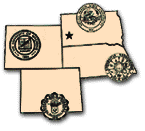Animal Science, Department of

Range Beef Cow Symposium
Date of this Version
2009
Document Type
Article
Abstract
The ruminant animal has two unique features – it chews its cud and has four distinct compartments in the stomach. More importantly the ruminant can convert forages that are comprised by large quantities of cellulose, that is poorly digestible by non-ruminants, into high quality protein (muscle) that provides excellent eating experiences and nutrients for humans. Rumen Physiology is the study of the mechanical, physical and biochemical function of the rumen. When I first enrolled in an animal nutrition course I felt this area was unnecessary in order to feed cattle. All I wanted to learn was does the cow need 1 or 2 pounds of a supplement and didn‟t want to worry about the theory of the digestion in the rumen. Over the years it became obvious that the better we understand how the rumen functions in breaking down or digesting feeds the better nutrition decisions we can make in feeding cattle. Many reading this paper will already have the knowledge expressed in this paper because of college courses, attending many seminars or studying the basics. Hopefully to some it will improve their understanding how the rumen functions, how digestion takes place and what affects digestion. For others hopefully it will serve as a review. My objective in this paper will be twofold: 1) will be to discuss rumen anatomy and physiology and 2) will discuss factors that will enhance or decrease digestion and its effect on animal performance and ultimately how these factors will affect the economics of cattle production.


Comments
Presented at Range Beef Cow Symposium XXI, December 1-3, 2009, Casper, Wyoming. Sponsored by Cooperative Extension Services and the Animal Science Departments of the University of Wyoming, Colorado State University, South Dakota State University, and the University of Nebraska¬Lincoln.